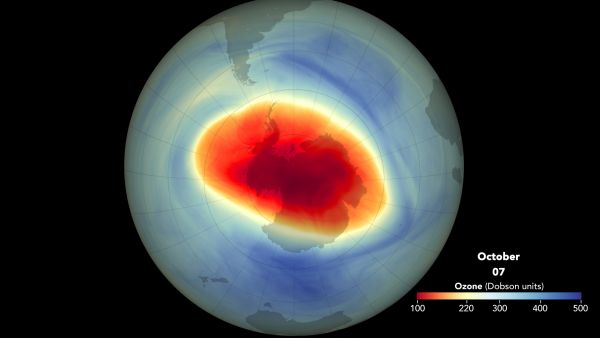When you purchase through nexus on our web site , we may earn an affiliate delegacy . Here ’s how it work .
A huge , trillion - ton crisphead lettuce about the size of Delawarebroke free from Antarctica ’s Larsen C Ice Shelfin July 2017 . As it incite away from its chilly parentage mom and into the Weddell Sea , a Brobdingnagian expanse of water system saw the light for the first time in up to 120,000 years .
And this month , a team of scientists will venture to the long - ice - buried expanse to investigate the mysterious ecosystem that was hidden beneath the Antarctic ice shelf for so long .

Looking out from the sea ice to iceberg A68, around November 2017, just months after the berg calved from Antarctica’s Larsen C Ice Shelf in July.
The freshly scupper seabed stretches across an area of about 2,246 satisfying miles ( 5,818 straight kilometers ) , according to the British Antarctic Survey ( BAS ) , which is leading the expedition . The scientists consider their journeying " pressing , " as they desire to document the system before sunlight begins to transfer at least the surface layer . [ In Photos : Antarctica ’s Larsen C Ice Shelf Through Time ]
" The calving of [ iceberg ] A-68 [ from the Larsen C Ice Shelf ] provide us with a unique chance to study marine life as it responds to a dramatic environmental alteration . It ’s authoritative we get there quick before the undersea environment changes as sunshine record the water and new metal money commence to colonize , " Katrin Linse , of the British Antarctic Survey , said in a statement .
What lies beneath ?

The edge of Larsen C Ice Shelf with the western edge of iceberg A68 in the distance
scientist roll in the hay trivial about the possibly foreign - similar life sentence that has taken up residence beneath Antarctica ’s ice ledge . What they do know come from alike calving event in the past tense : ball of ice break off the Larsen A and B shelves ( turn up Frederick North of Larsen C on the Antarctic Peninsula ) in 1995 and 2002 , severally . Two German expeditions to those " newly " exposed areas revealed sparse life . However , it take five to 12 year for the expeditions to make it to those areas , and by that time tool from other orbit had made their way to both spots , Live Science previously reported .
In other icy realms around Antarctica , some freakish creatures have turned up . For instance , a bristled marine insect that lives in the Southern Ocean , andLive Science antecedently reportedas looking like a " Christmas ornament from hell , " has an extendable pharynx angle with pointy teeth . And some creatures have made a living under extreme conditions , include a crustaceous calledLyssianasid amphipod , which was find thrivingbeneath the Ross Ice Shelf in western Antarctica . One of the more notable Antarctic animals , the icefish has natural antifreeze in its profligate and body fluid , earmark it to survive the gelid temperatures of Earth ’s chilly bottom .
To explore the once - shroud ecosystem , the scientist — hailing from nine enquiry institute — will set off from the Falkland Islands on Feb. 21 . They plan to expend three weeks aboard the BAS research ship , the RRS James Clark Ross . To sail the shabu - filled body of water to the remote emplacement , the ship will trust on satellite data point , according to the BAS .

Once they arrive , the team plans to collect sample of biography ( seafloor animals , bug , plankton and any other inhabitants ) as well as sediments and water .
Stay tuned .
in the first place publishedon Live Science .
















